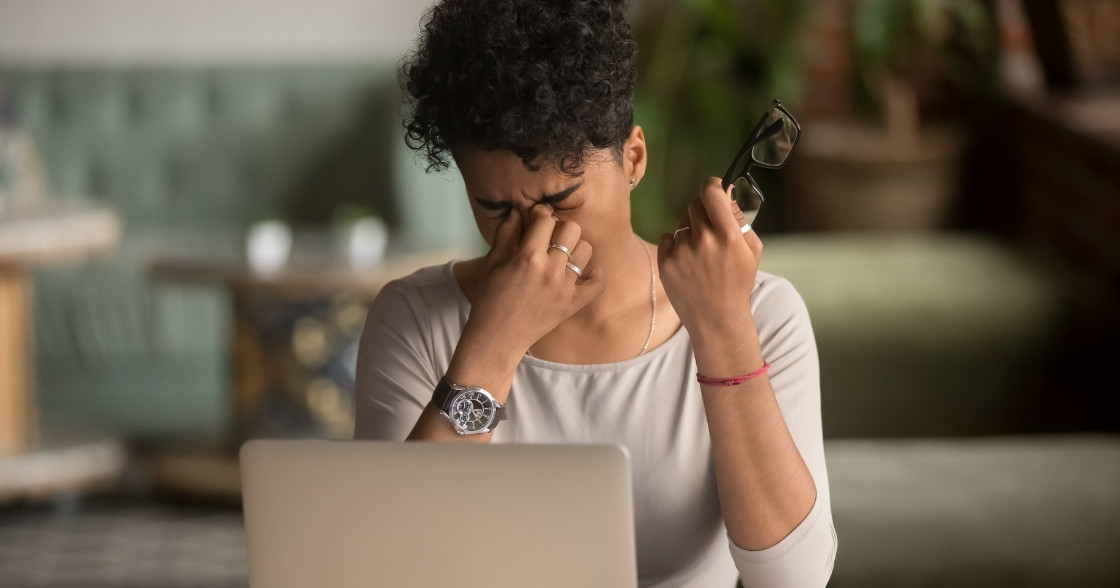Self-Care Guide for Tired Eyes
Have you noticed dark circles, puffiness, or droopy eyelids? Do you easily develop redness in the eyes? They are the signs of tired eyes. You can reach for your concealer to hide the evidence quickly, but you should learn to take care of your tired eyes and keep them healthy.
Tired Eyes – Eye Fatigue – Eye Strain
Tired eyes, also known as eye fatigue or eye strain, happen when a person uses their eyes intensely for an extended period without rest. It is an extremely common condition that affects millions of people.
Tired eyes usually do not lead to major vision problems, but they can cause your vision to get blurry or make it difficult for you to keep your eyes open. That’s why it’s essential to keep your eyes healthy and energized so that you can be more productive and feel more comfortable throughout the day.
What causes eye strain
When you use your eyes for an extended period or under suboptimal conditions, your eyes will get tired. Common causes for eye fatigue are: reading or looking at a digital screen for a long time, driving for a long time, being exposed to too much or too little light, working under high pressure or stress, or being in direct contact with air from a fan or heater.
Tired eyes can also be a side effect of other eye issues such as dry eyes or refractive error (near-sighted and far-sighted). Also, if you have prescription glasses but choose not to wear them, or if you wear glasses with the wrong prescription, your eyes will have to work much harder and can become strained quickly.
Digital eye strain, also known as computer vision syndrome, is the most common type in today’s society. In fact, over 60% of Americans are affected by digital eye strain (Sorensen 2022) each year. People who use these devices for two or more hours a day without taking breaks are more likely to experience digital eye strain.
The reason digital devices are a major factor in causing tired eyes is that people tend to blink less or sit with a poor posture, meaning they are more likely to get dry eyes and develop neck and back problems later on.
Depending on your settings, digital screens can also have glare or reflect bright light into your eyes, making it difficult to see. On top of that, sometimes the words can be difficult to see on a screen, especially if the font size is too small, which causes your eyes to work even harder.
What to do to prevent eye strain
- Make sure you use appropriate lighting for your activity and avoid directing it at your eyes. For example, instead of turning off all the lights when watching TV, you can dim the lights to lower the contrast between the room and the TV, reducing glare.
- When waking up in the morning, you can use brighter lights. But when preparing to go to bed, dim the lights. This helps your body align better with the daylight cycle, which is also why it is important to avoid spending time on screens for at least an hour before bed.
- Take frequent breaks. Focusing on something for a long time will exhaust your eyes and your mental capacity, causing you to have difficulty concentrating and losing productivity. Make sure to close your eyes or look away from the task every couple of minutes to give your eyes a break and keep your vision clear.
- When reading and writing, turn on a table lamp to point it at the object you are looking at, and the lampshade will prevent the light from entering your eyes. This also applies when you are working on a screen.
- Avoid shining light directly on your computer screen. Position your computer monitor so that it is facing away from white walls or windows, and use an anti-glare cover to reduce glare. Remember to keep the room bright so that the computer screen or any other digital screens are not too bright.
- If your computer is set up in a bad position, you are more likely to sit in a poor posture. To fix this, make sure that the monitor is placed an arm’s length away from your body as this will keep it close enough so that your eyes do not have to strain to see objects on the screen while also keeping it far away enough so that your head does not have to move excessively to see the whole screen. Adjust the monitor’s height so that the top of the screen is at eye level or 0 to 30 degrees below eye level. Try to make sure the screen is perpendicular to your eyes. This makes it so that you can see the screen while sitting comfortably with a straight back and neck.
The Best Solution
Everything listed above will help ease the effects of eye strain, but they won’t solve the problem entirely. This is because tired eyes are caused by a lack of qi, vital life energy, for your body and mind.
Multiple factors lead to lack of qi: exhausting qi too much and too quickly through excessive eye use, blockages in your neck and spine that prevent qi from reaching the head, insufficient qi supplemented efficiently due to sleep problems and imbalanced diet, and so on.
To gather more qi into your body, you can practice qigong, improving your overall well-being. One of the Onenergy qigong preparatory practices is to improve your tired eyes and overall eye health. It is available in the Onenergy App. If you are new to qigong or want to learn more, you can start with the qigong beginners guide on our website.
Works Cited
Sorensen, Tyler. “Over 60% of Americans Suffer from Digital Eye Strain.” Rebuild Your Vision, 11 Oct. 2022, https://www.rebuildyourvision.com/blog/vision-conditions/computer-vision-syndrome/over-60-of-americans-suffer-from-digital-eye-strain/







